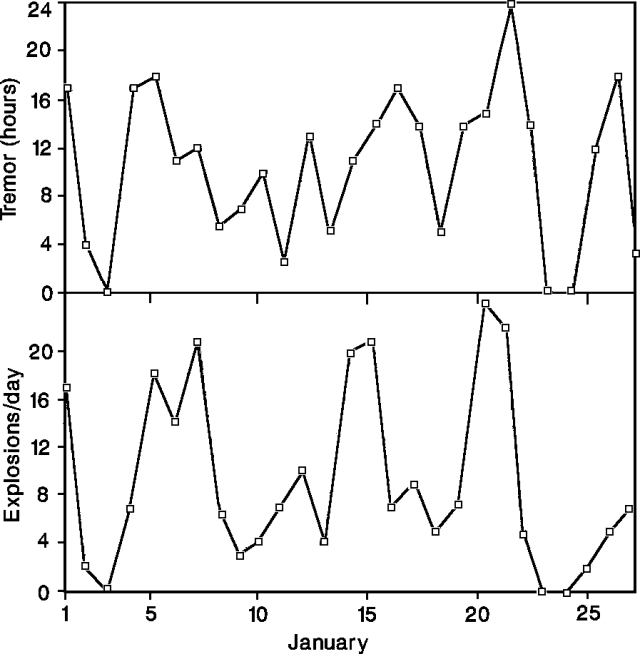Report on Arenal (Costa Rica) — January 1992
Bulletin of the Global Volcanism Network, vol. 17, no. 1 (January 1992)
Managing Editor: Lindsay McClelland.
Arenal (Costa Rica) Lava extrusion and Strombolian explosions continue
Please cite this report as:
Global Volcanism Program, 1992. Report on Arenal (Costa Rica) (McClelland, L., ed.). Bulletin of the Global Volcanism Network, 17:1. Smithsonian Institution. https://doi.org/10.5479/si.GVP.BGVN199201-345033
Arenal
Costa Rica
10.463°N, 84.703°W; summit elev. 1670 m
All times are local (unless otherwise noted)
Lava emission and Strombolian explosions continued at Crater C in January; at Crater D, activity was restricted to fumarolic emissions. One lobe of the SW-flank lava flow, observed since September, was active in December, reaching 720 m elevation and covering ~100 m2 of grass. A flow that began in mid-to late November and followed the well-defined levees of the September flow, had reached 1,000 m elevation in January. A third flow was visible high on the NNW flank in January.
Explosions decreased in number and magnitude near the end of January (figure 43). White clouds associated with ash emissions rose >1 km and were carried NW, W, and SW. Acid rain, with pH as low as 3.1, continued to affect certain types of ferns, grasses, and heath. Measurements of pH at hot and warm springs on the N and NW flanks showed no significant changes from previous years.
 |
Figure 43. Daily hours of tremor (top) and number of explosions (bottom) recorded at Arenal, 1-27 January 1992. Courtesy of OVSICORI. |
Seismicity in January declined to 50% of December's recorded levels. Tremor became more frequent with continuous episodes of more than 24 hours.
Geological Summary. Conical Volcán Arenal is the youngest stratovolcano in Costa Rica and one of its most active. The 1670-m-high andesitic volcano towers above the eastern shores of Lake Arenal, which has been enlarged by a hydroelectric project. Arenal lies along a volcanic chain that has migrated to the NW from the late-Pleistocene Los Perdidos lava domes through the Pleistocene-to-Holocene Chato volcano, which contains a 500-m-wide, lake-filled summit crater. The earliest known eruptions of Arenal took place about 7000 years ago, and it was active concurrently with Cerro Chato until the activity of Chato ended about 3500 years ago. Growth of Arenal has been characterized by periodic major explosive eruptions at several-hundred-year intervals and periods of lava effusion that armor the cone. An eruptive period that began with a major explosive eruption in 1968 ended in December 2010; continuous explosive activity accompanied by slow lava effusion and the occasional emission of pyroclastic flows characterized the eruption from vents at the summit and on the upper western flank.
Information Contacts: E. Fernández, V. Barboza, and J. Barquero, OVSICORI; G. Soto and R. Barquero, ICE.

